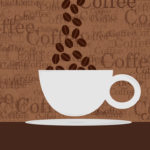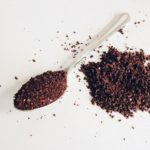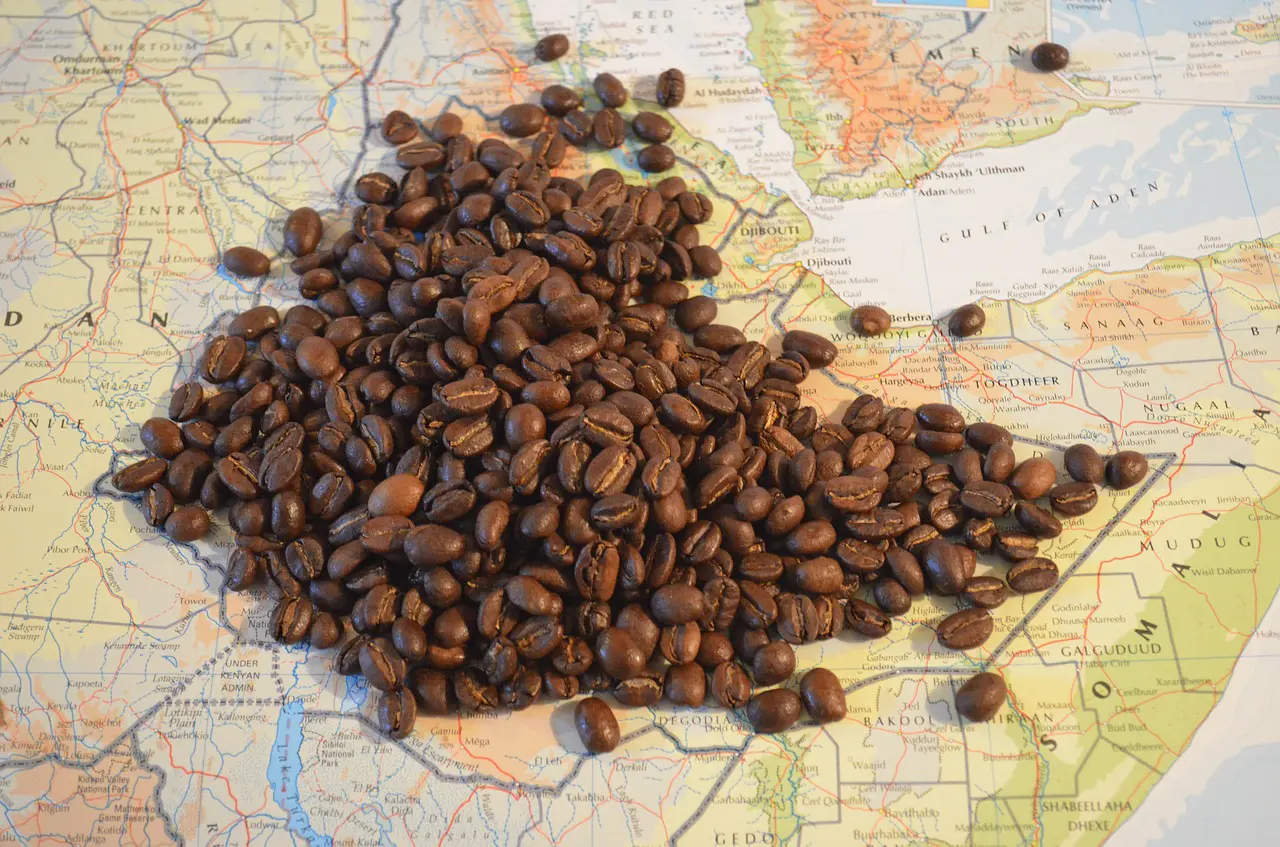You know we love our computerized, automated, cutting edge coffee makers as much as the next coffee aficionado. But sometimes, the old ways really are the best. There’s something really reassuring about the sounds and scents of percolating coffee.
And taking time out to brew coffee with one of the traditional methods, like a stovetop coffee percolator, can be something of a salve to the soul – much needed in these trying times.
While, as a method, percolation is not quite as popular as single-serve or some of the flashier ways of making coffee out there, there’s a reason it’s stood the test of time. So if you’ve always wondered about the ins and outs of the percolating coffee method, including how long to percolate coffee, read on.
What Does Percolate Mean?
Percolation refers to the process of filtering a gas or liquid (often water) through a porous or permeable substance. The word percolate originally comes from a Latin word meaning to put through a sieve.
While we might think of “permeable” or “porous” as words used to describe rocks, they can also be used to describe coffee. Or even medications. (It’s amazing what we’ve learned about science from our coffee studies.)
What Is A Percolator?
A percolator has a pot with a small chamber at the bottom which connects to a central chamber or tube which then links to the top of the pot. The chamber at the top contains ground coffee. The entire mechanism is held within what looks like a tall kettle. Inside, the steam-powered, consistent vacuum allows you to brew a great cup of coffee.
The vacuum means your coffee grounds are saturated with steam before the filtering process even begins. You need the heat to be high – somewhere between 195 and 200 degrees Fahrenheit. This heat level is what sometimes results in that slightly metallic taste.
What Is Coffee Percolation?
When you percolate coffee, you’re passing steam through coffee grounds. (It’s astonishing how much you can learn about science from simply making coffee.)
There’s a tendency to think that stovetop percolators produce a relatively dry, bitter cup of coffee. But there are ways to combat this perceived bitterness.
Stovetop percolators, and their later electric relatives, were the preferred method of making coffee for many years until automatic drip machines appeared on the market.
Gravity Or Pressure? Two Types Of Stovetop Percolators
Stovetop percolators are long-lasting. And in a world where sustainability is increasingly important, this is a strong selling point. They’re traditionally made out of stainless steel although you will occasionally encounter aluminum.
The two types of percolators are known as the gravity percolator, and its relative, the pressure percolator.
The most common is the gravity percolator, where water bubbles up through the tube in the center, before falling through the grinds using gravity. (Incidentally, did you know Isaac Newton discovered the concept of gravity while he was self-isolating at the time of the Great Plague of London?)
It’s not entirely accurate to call the pressure percolator a percolator – it’s actually a Moka pot. The central chamber takes water up and through the coffee grounds. A pressure percolator forces water through the grounds with the aid of water pressure and steam.
Electric Percolators
Or you could opt for an electric percolator. With an electric model, you require a source of electricity rather than a flame or other heat source. You can even buy some designed for use in a microwave.
Many electric percolators make a relatively musical noise when the coffee is ready, taking some of the guesswork out of the process. Widely available machines include the Farberware electric percolator; other manufacturers include AdCraft, Farberware, Medelco, Presto, and WestBend.
Electric percolators tend to be very slightly less robust than the stovetop varieties, and not quite as portable. If you need a percolator that’s robust enough to withstand the outdoor life and camping trips, then try one of the double-coated enamel models on the market.
How Does A Percolator Work?
When the coffee grounds are saturated, the brewed coffee drains back into the reservoir where the water is kept. Since the brewed coffee is reheated and steeped repeatedly during the process, the coffee becomes extremely strong.
You know that saying about a watched pot (or kettle) never boils? Well, with a percolator, that’s a good thing – you need to be watching. Actively. If you don’t you risk overboiling. And overboiled coffee is not a good flavor.
How To Use A Percolator
We know it’s a little geeky, but even for a stove top percolator coffee maker, we like to have the manual to hand. Some percolators do come apart. If that’s the case, make sure the stem is nice and secure inside the pot with the water first. You can then make sure the coffee basket itself is safe and snug on top of the stem.
Pour in the water and heat it, enabling the water to run through the chamber at the bottom, up the tube, and filter into the chamber at the top. As a fun aside, the percolator was invented by physicist Count Rumford between 1810 and 1814. He wasn’t keen on tea and he thought alcohol was utterly immoral.
Fill the coffee basket with coffee grounds – don’t overfill. If there is a lid, put this back on, then close the whole device.
When measuring the water, pay attention to the graduated markings inside the kettle. For ground coffee, try about 1 tablespoon for every 8 fluid ounces of water.
On The Boil – How To Make Great Percolator Coffee
Pop the percolator on the stove or heat source before setting the heat. You don’t want to scorch it, so keep the heat low or medium.
Many models have a clear knob at the top of the device – this is often made from glass or plastic. When the water gets close to boiling and reaches the appropriate temperature is when you’ll see it bubbling in the knob.
When the water’s heating, you’re looking for bubbles – and around about a two-to three-second gap in between. You need to keep the percolator at this temperature. You can do this by watching the bubbles. (Think of it as a meditation.)
If the bubbles are a pretty constant stream, the water has reached boiling point and you need to bring the temperature down. You’re looking for bubbles a few seconds apart. As the brewing process continues, you’ll see the water color change, to a rich, coffee-colored brew.
Tell Me How Long To Percolate Coffee?
When the bubbles are regular, set a timer. We’d recommend anywhere from six to ten minutes; a good rule of thumb seems to be about five minutes from the time you see that first coffee “perk”. This depends on your own taste, and this is where a little trial and error comes in. We’d suggest starting with ten minutes; adjust the time subsequently to suit your own palate.
Even with the timer set, you need to keep an eagle eye on the percolator. When the timer is done, turn off the burner or heat source. Remove the stovetop percolator – make sure you protect your hands with a thick kitchen towel or a heat-resistant oven mitt. And make sure you put the perculator on a heat resistant source like a metal trivet.
While you’re waiting for the coffee to cool, you also need to get rid of the coffee grounds. A lot of stovetop percolators lack strong seals between the reservoir and the basket, so remove the basket, and dispose of your used grounds as you usually would. That is unless you’d like them to make their way into that delicious cup of Joe you’ve been craving.
Using A Coffee Percolator – Tips And Tricks
We found it vital to pay careful attention to the measurements and ratios of coffee to water. This helps you avoid that nasty overboiling we mentioned earlier, and also helps you get just the right flavor.
Of course, if you like a milder coffee, try a smaller amount of coffee and a larger amount of water. We tried a few different grind sizes, and the best option for the percolator seemed to be medium-coarse grounds. The finer grinds gave the end result a little more bitterness, and the larger grinds didn’t really bring out the flavor as well as it could.
What Does Perking Mean, Again?
You might see it written as perked, or “perced”, or percolated, but it all comes back to the same process. The soluble compounds in the coffee leave the grounds, and mix with the water to form coffee. Perking specifically refers to the distinctive spurting noise you hear as the coffee starts brewing.
Just to recap, percolating is a method of making coffee where steaming hot liquid is passed through the porous mass of coffee grounds. It’s continuous – accounting for the very robust flavor of the end result.
Advantages of Perked Coffee
Percolator coffee is not for the faint-hearted. Due to the way the brewing process works, this coffee is strong. Robust. Full-bodied. Puts hairs on your chest. (If you want them. If we’re still allowed to use that expression in our politically correct era.)
Also, perc coffee is hot. Like, don’t touch the kettle with bare hands hot. It’s what makes it an especially comforting method in the depths of winter.
Coffee percolators are ideal if you just want to make a small amount of coffee, even if it’s only one cup. They’re easy to clean. You don’t even need to worry about descaling. Many stovetop percolators are also dishwasher-safe.
How To Percolate Coffee – A Few Words Of Caution
Coffee made in a percolator might also have a slightly cloudy appearance, and this is normal right after brewing. Once you’ve removed the pot from the heat and it’s had a chance to settle, that cloudiness will dissipate.
Since there’s no filter in a coffee percolator, you’re going to end up with some fine grounds in your cup. There’ll usually be a little sediment left in the cup too. Again, this is to be expected.
Coffee Percolator Vs Drip – What’s The Difference?
With many drip machines, you can simply add your coffee, filters, waters, and leave them to look after themselves. Not so with stovetop percolators in particular – you need to nurture them.
Percolator coffee is usually much stronger than drip coffee – the coffee grounds are soaked and steeped more than once, so you get the absolute maximum extraction of flavor. Perk coffee is usually considerably hotter than drip coffee, too.
We’ve also found that coffee percolators, in general, require a little less maintenance than drip machines. You just rinse and reuse. You don’t even have to worry about the filters since there aren’t any.
We did find, however, it was wise to have a mesh strainer on hand to make sure the tiny coffee grounds didn’t make their way into our finished cup of coffee. And we had to make sure we watched the coffee percolator so the coffee didn’t over boil and spoil.
In The End….
If it’s a strong, hot cup of coffee you’re in the mood for, with a touch of ritual about the making, then percolator coffee is ideal. As with every coffee-making method, the end results come back to the quality of the beans you’re using.
Right now, for many of us, we’re all having to discover those time-honored ways of doing things. And some of us have more time than usual to experiment a little. So what better place to start than how long to percolate coffee for that perfect cup of Joe?

Hi my name is Larry, a coffee aficionado from the US. I have already visited Colombia, Sumatra, Guatemala, Costa Rica, Ethiopia and Jamaica in my pursuit of finding the best-tasting coffee beans. I currently write from Bali and enjoy the relaxed life that you can only find in Canggu. Welcome to my coffee world!





